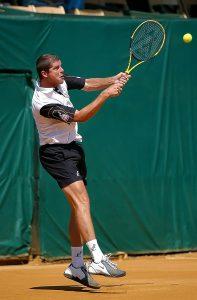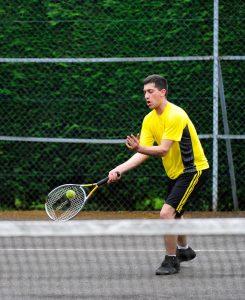We may earn money or products from the companies mentioned in this post.
Brief History of Tennis
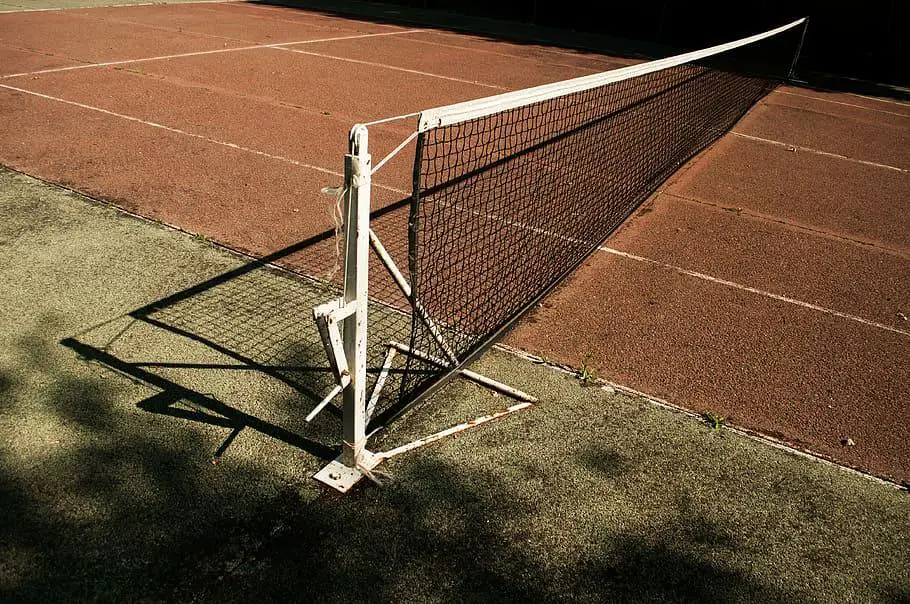
Tennis, a beloved sport played by millions around the world, has a rich and fascinating history that dates back centuries Its origins can be traced back to various ancient civilizations, including the Egyptians, Romans, and Greeks However, it was during the medieval era in Europe that tennis truly began to take shape
Originally known as “real tennis” or “royal tennis,” the sport was played by royalty and nobility in grand indoor courts The game gradually evolved over time, with new rules and techniques emerging
In the 19th century, lawn tennis gained popularity as an outdoor variation of the game This shift allowed for greater accessibility and participation among people from different social backgrounds Major tennis tournaments were established during this period, including Wimbledon in 1877
Overview of Tennis Court Dimensions and Equipment
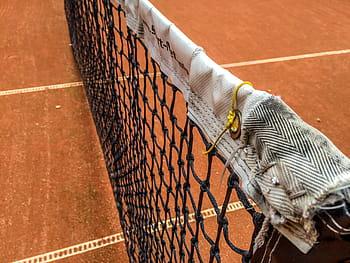
Court Size and Layout
A standard tennis court is rectangular in shape and measures 78 feet long by 27 feet wide for singles matches For doubles matches, the width increases to 36 feet The court is divided into two equal halves by a net suspended at a height of three feet at the center
The playing area is further divided into several sections: baseline (at the back), service line (halfway between baseline and net), center mark (in the middle), tramlines (running parallel to sidelines for doubles matches), and service boxes (on either side of the net).
Types of Surfaces
Tennis can be played on various surfaces, each with its own unique characteristics that affect gameplay The most common types include:
-
Grass:
Grass courts offer a fast-paced game with low bounce -
Clay:
Clay courts provide a slower game with higher bounce, allowing for longer rallies -
Hardcourt:
Hardcourts, made of materials like concrete or asphalt, offer a medium-paced game with consistent bounce -
Carpet:
Carpet courts are less common nowadays but used to be popular due to their fast surface
Key Equipment: Rackets, Balls, and Nets
Tennis players rely on specific equipment to play the game effectively The three essential pieces of equipment are rackets, balls, and nets
Rackets come in various sizes and designs but generally consist of a frame with strings stretched across it These strings allow players to hit the ball with power and control
Tennis balls are typically yellow in color and have a felt covering They are specially designed for optimal bounce and durability during gameplay
The net is an integral part of the tennis court Made of mesh material, it divides the court into two halves and acts as a barrier that players must aim their shots over during play
In conclusion,
Tennis has a fascinating history that spans centuries, evolving from its origins as “real tennis” played by royalty to becoming an accessible sport enjoyed by millions worldwide Understanding the dimensions of a tennis court and the different types of surfaces helps players adapt their strategies accordingly Lastly, having the right equipment such as rackets, balls, and nets is crucial for players to fully immerse themselves in this exhilarating sport So whether you’re new to tennis or a seasoned player, embrace this remarkable sport that combines skill, athleticism, and immense enjoyment
The Tennis Net: Structure and Dimensions
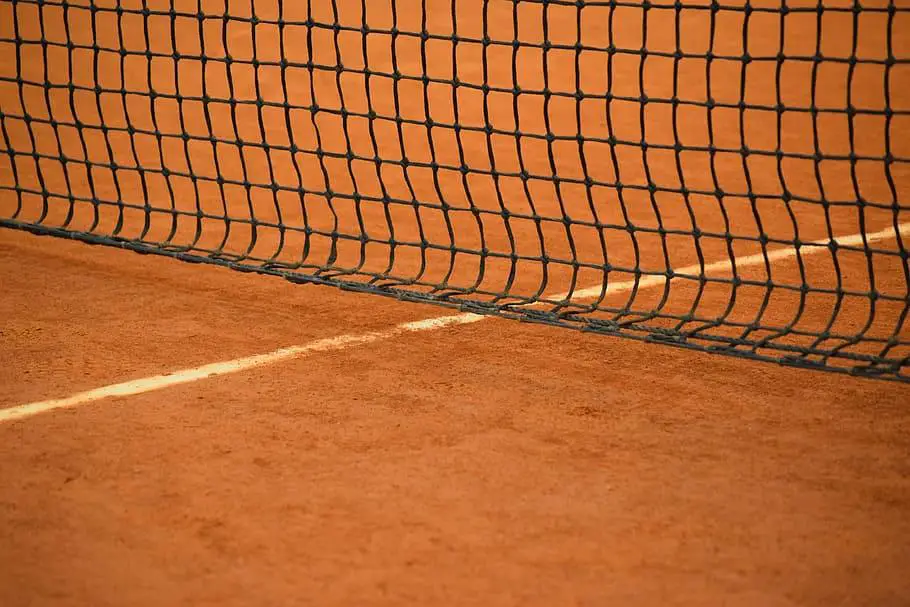
When it comes to the game of tennis, one crucial element that often goes unnoticed is the tennis net This seemingly simple structure plays a vital role in defining the boundaries of the court and creating an engaging playing experience Let’s take a closer look at the structure and dimensions of the tennis net
Materials used for the net
To ensure durability and optimal performance, tennis nets are typically crafted from high-quality woven mesh fabrics such as nylon or polyester These materials offer excellent strength and resistance to wear and tear, making them ideal for withstanding intense gameplay In addition to the fabric, cables or ropes are used for support to keep the net taut and secure
Standard net dimensions
For consistency across different courts, there are standardized dimensions for tennis nets The length of a standard tennis net measures around 42 feet (128 meters), providing ample coverage across the width of the court
When it comes to height, there are slight variations depending on different sections of the net:
-
Height at the posts:
At either end of the court, where poles provide support for the net, its height measures approximately 3 feet 6 inches (1 meter). This ensures that players have enough space to clear shots without hindrance -
Height in the center:
In contrast, at its midpoint, known as “the center strap,” or “net strap,” which secures it in place, the tennis net has a slightly reduced height of around 3 feet (091 meters). This lower height prevents balls from bouncing too high when they hit this section
Description of center strap functionality
The center strap, an essential component of the tennis net, serves a crucial purpose beyond just keeping the net in position It allows for proper tension adjustment, ensuring that the net remains taut and at the correct height throughout gameplay
By adjusting the tension of the center strap, players can fine-tune the net’s height to meet their specific requirements This feature adds flexibility and adaptability to cater to different playing styles and court conditions
In conclusion, understanding the structure and dimensions of a tennis net is essential for both players and enthusiasts alike The choice of materials, along with standardized measurements, ensures consistency across courts worldwide Additionally, the center strap’s functionality enables players to adjust tension according to their preferences So next time you step onto a tennis court, take a moment to appreciate the intricacies of this seemingly simple yet significant element – the tennis net
Why is the Tennis Net Lower in the Middle?

Tennis, a game of precision and strategy, brings together athletes who strive to outmaneuver their opponents One peculiar aspect of tennis that often sparks curiosity is the height variation of the net While the ends of the net are positioned at a standard height, it gradually lowers in the middle In this article, we delve into the reasons behind this design choice and its impact on gameplay
Explanation about how it affects ball trajectory
The lowered net in the middle has a profound effect on ball trajectory during gameplay As players strike powerful shots towards each other, understanding angles becomes crucial for successful shot placement The dip in net height allows players to aim for different areas more efficiently, adding an extra layer of complexity to their decision-making process
Imagine hitting a cross-court shot: with a uniform net height, it would be challenging to clear the net while maintaining enough depth and angle However, thanks to the lower middle portion of the net, players can execute these shots more effectively by utilizing optimal angles
Discussion on how it influences gameplay and fairness between players
The varying height of the tennis net not only adds excitement but also ensures fairness between players By lowering the middle portion of the net, both offensive and defensive styles are balanced out during rallies
Compared to sports like volleyball or badminton where nets have consistent heights throughout, tennis demands adaptability due to its unique design choice This variation fosters equal opportunities for all players regardless of their preferred playing style or physical attributes
Mentioning ITF rules about net height requirements
The International Tennis Federation (ITF), which governs professional tennis regulations worldwide, has specific guidelines regarding net heights According to the ITF rules, the net must be 3 feet (0914 meters) high at the posts and gradually descend to a height of 3 feet 6 inches (107 meters) at the center
These regulations ensure consistency across tennis courts globally, allowing players to adapt their strategies and skills in a standardized environment By adhering to these rules, tennis matches can be played with fairness and integrity
In conclusion, the lowered middle portion of the tennis net adds an intriguing dynamic to the game It affects ball trajectory, influencing shot selection and strategy for players This design choice promotes fairness and equal opportunities while aligning with ITF regulations for consistent gameplay worldwide
Impact on Players’ Strategies and Techniques
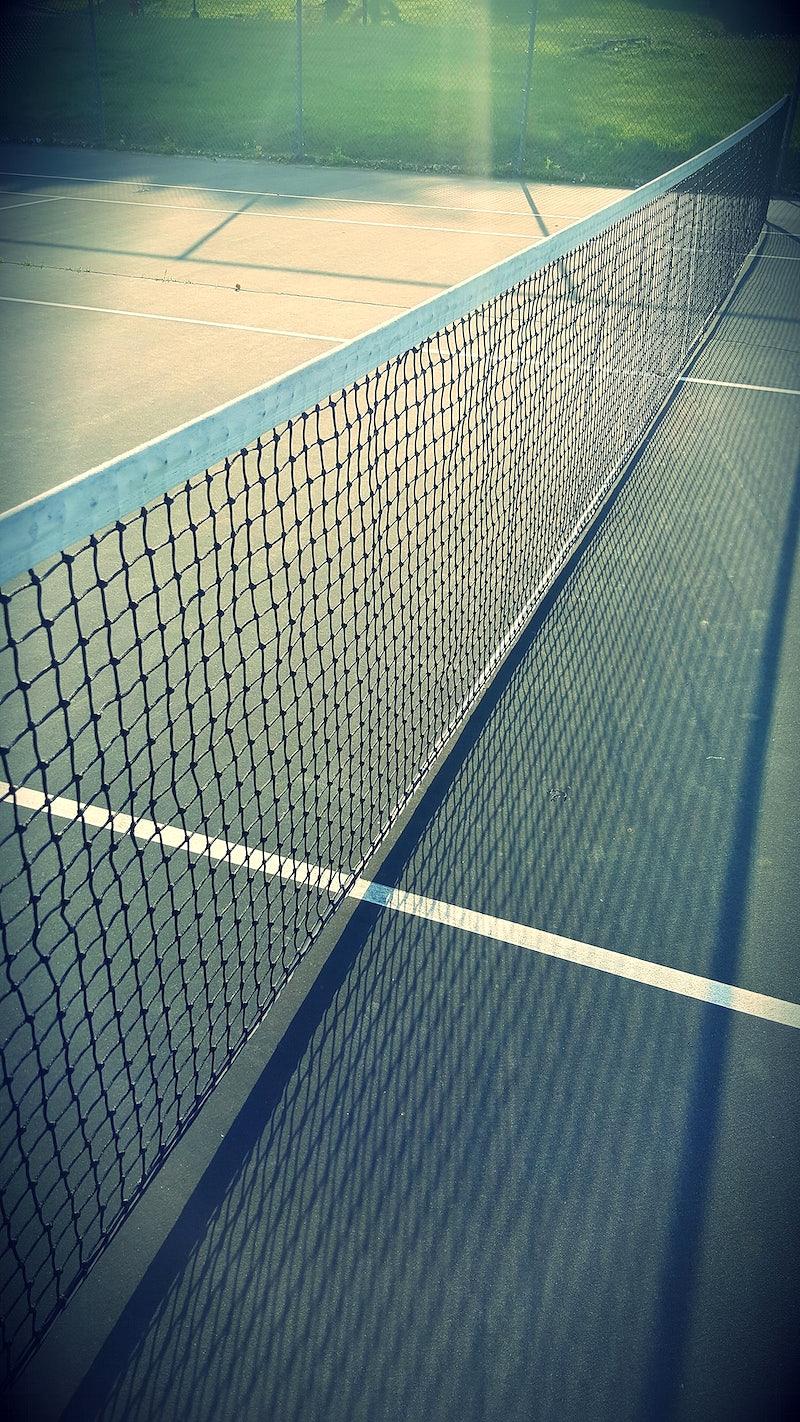
When it comes to tennis, the height of the net plays a crucial role in shaping players’ strategies and techniques Understanding the impact of a lower net in the middle can give players a competitive edge by exploiting certain advantages and adapting their gameplay accordingly
Advantages and Disadvantages of Serving from Each Side
In tennis, serving from either the deuce court or ad court presents unique advantages and disadvantages In the deuce court, players have an advantage when serving as they can aim for the weaker backhand side of right-handed opponents On the other hand, in the ad court, serving wide to left-handed opponents can be advantageous due to their weaker backhand return It’s essential for players to recognize these differences and strategize their serves accordingly
Serving strategies targeting weaker player positions can also be influenced by a lower net in the middle For example, if one player has a weaker volley than groundstrokes, it may be beneficial for their opponent to serve towards them more often This forces them into uncomfortable positions at the net, increasing the chances of making errors or providing opportunities for attacking shots
Role of Different Types/Styles in Exploiting Net Height Variations
The style of play in tennis is another factor affected by net height variations Serve-and-volley players have an advantage with a lower net as they can exploit shorter reaction times for opponents returning serves Their aggressive approach allows them to close in on the net quickly after serving, putting pressure on their opponent’s returns
In contrast, baseline players tend to rely more on consistent groundstrokes from behind the baseline While a lower net might not directly benefit their game style like serve-and-volley players, they can still use it strategically By employing spin, such as topspin or slice, they can create challenging trajectories over the net, making it harder for opponents to handle their shots effectively
Influence on Doubles Matches
The influence of varying net heights is particularly pronounced in doubles matches In these matches, teams must work together to exploit the advantages provided by a lower net in the middle For example, if one player has a stronger volley than their partner, they can take advantage of the shorter reaction times and aggressively move towards the net more often This forces opponents into defensive positions and increases the chances of winning points
Team dynamics play a crucial role in exploiting varying net heights Communication between partners is key in determining who takes charge at the net and who stays back to cover the baseline By strategically utilizing each player’s strengths and positioning themselves effectively according to the lower net height, doubles teams can gain an upper hand in their matches
With these insights into how a lower net height affects players’ strategies and techniques, it becomes clear that understanding this aspect of tennis is crucial for success on the court By adapting their gameplay accordingly and exploiting any advantages presented by a lower net in the middle, players can elevate their performance and increase their chances of victory
Useful Links
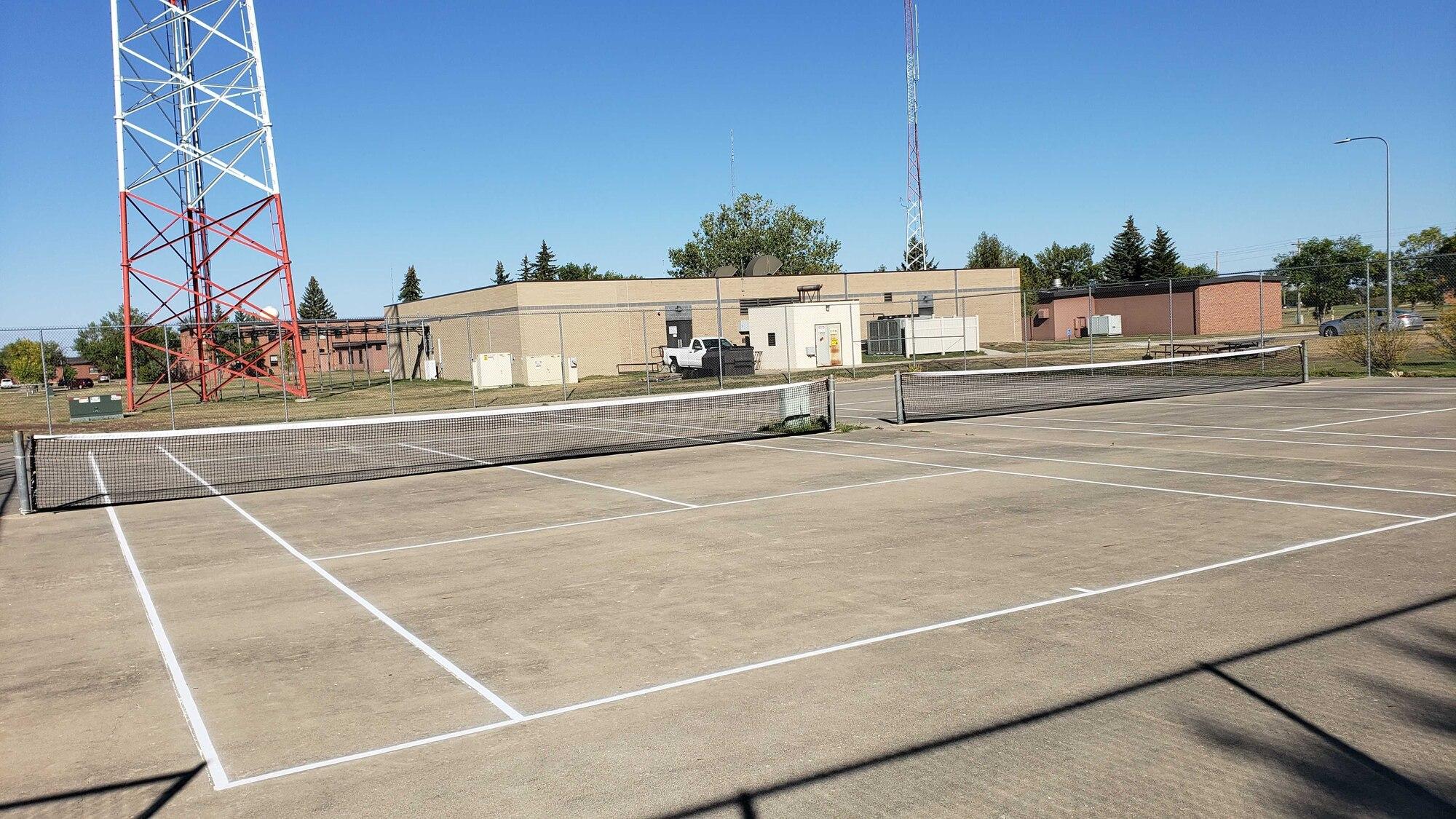
How High Is A Tennis Net?
Are Pickleball Nets the Same Height as Tennis Nets?
Pickleball Net Height Vs Tennis Net
Pickleball Net Height vs. Tennis Net Height
How Tall is a Tennis Net? – Penalty File
Tennis Net Height Rules
Pickleball Net Height vs. Tennis Net Height
What Is The Height of a Tennis Net? (Easy Guide)
Why is tennis net lower in middle?
Tennis Net Dimensions and Ultimate Guide To Tennis Nets
Tennis Nets for Singles & Doubles Courts | Net World Sports
Pickleball Net Height [Here’s What The Rulebook Says]
Can You Use a Tennis Net for Pickleball? Let’s Find Out!
Is Pickleball Net Same Height As Tennis?
Tennis Net Height: The Ultimate Guide for Players and …
How to Lower a Tennis Net for Pickleball (Helpful Guide)
Tennis Nets | The Best Tennis Court Nets | Net World Sports
Pickleball Net Height & How It Compares With Tennis
Pickleball Net Height vs. Tennis Net Height – pickleballyard.com



